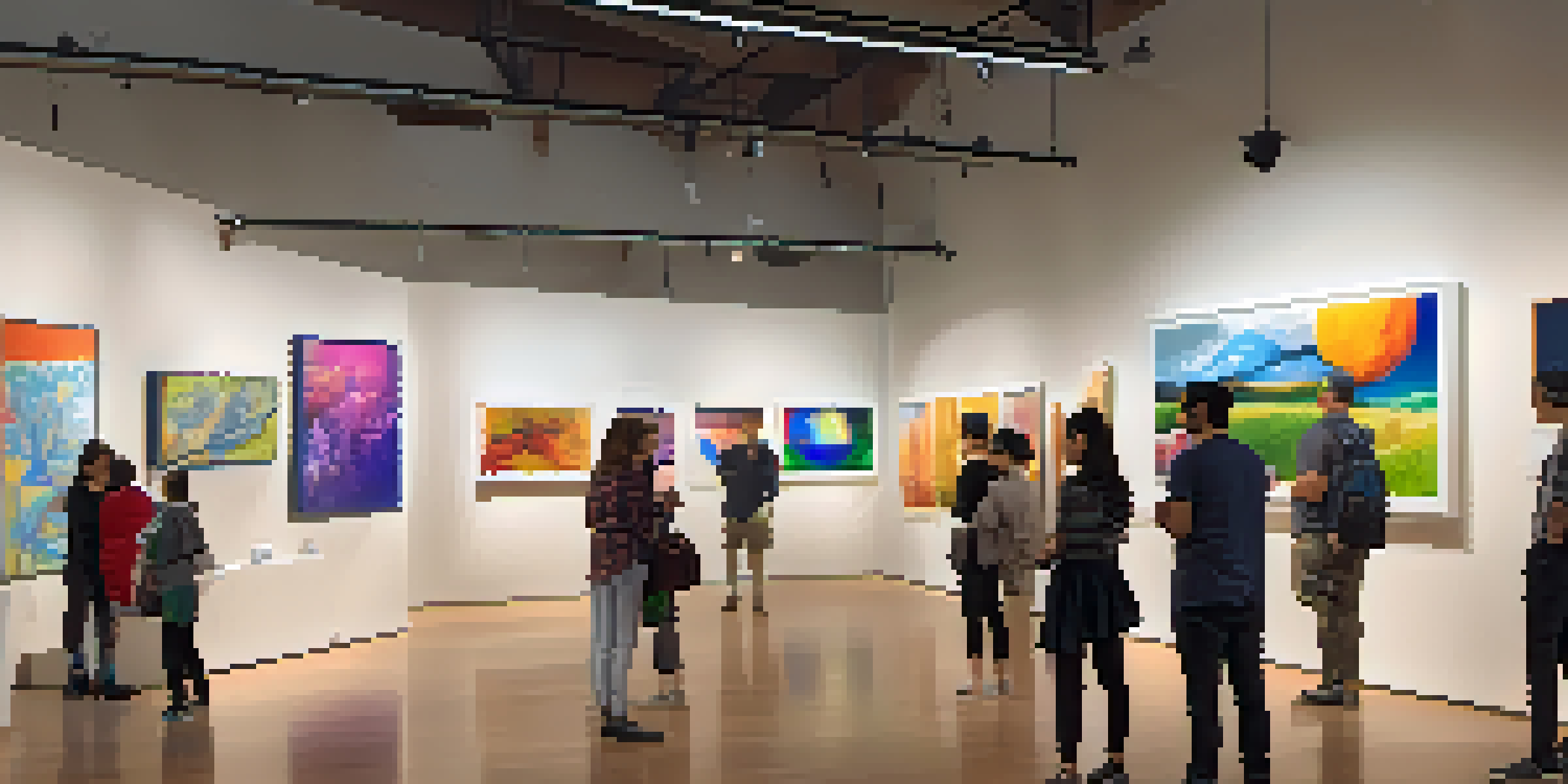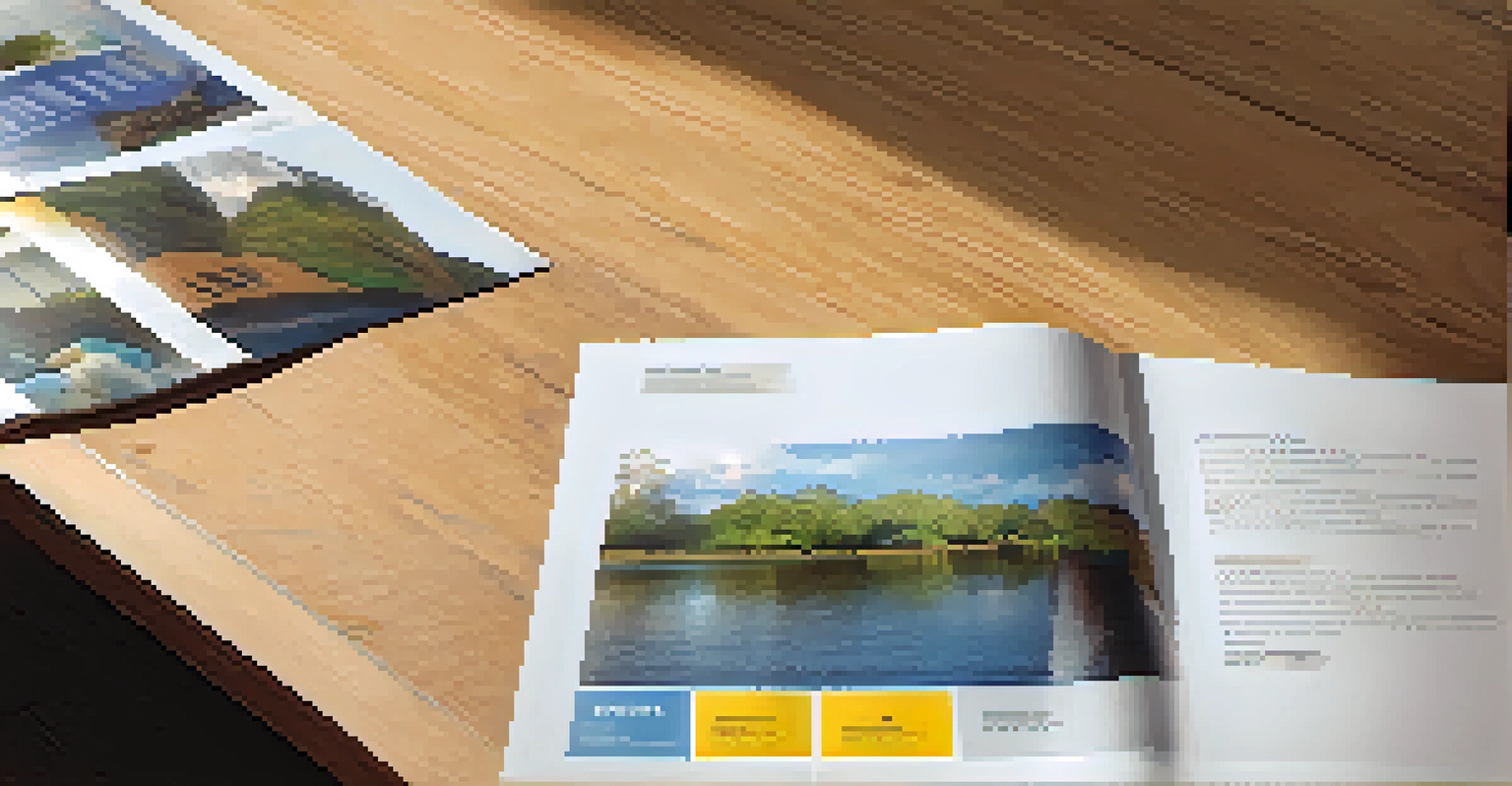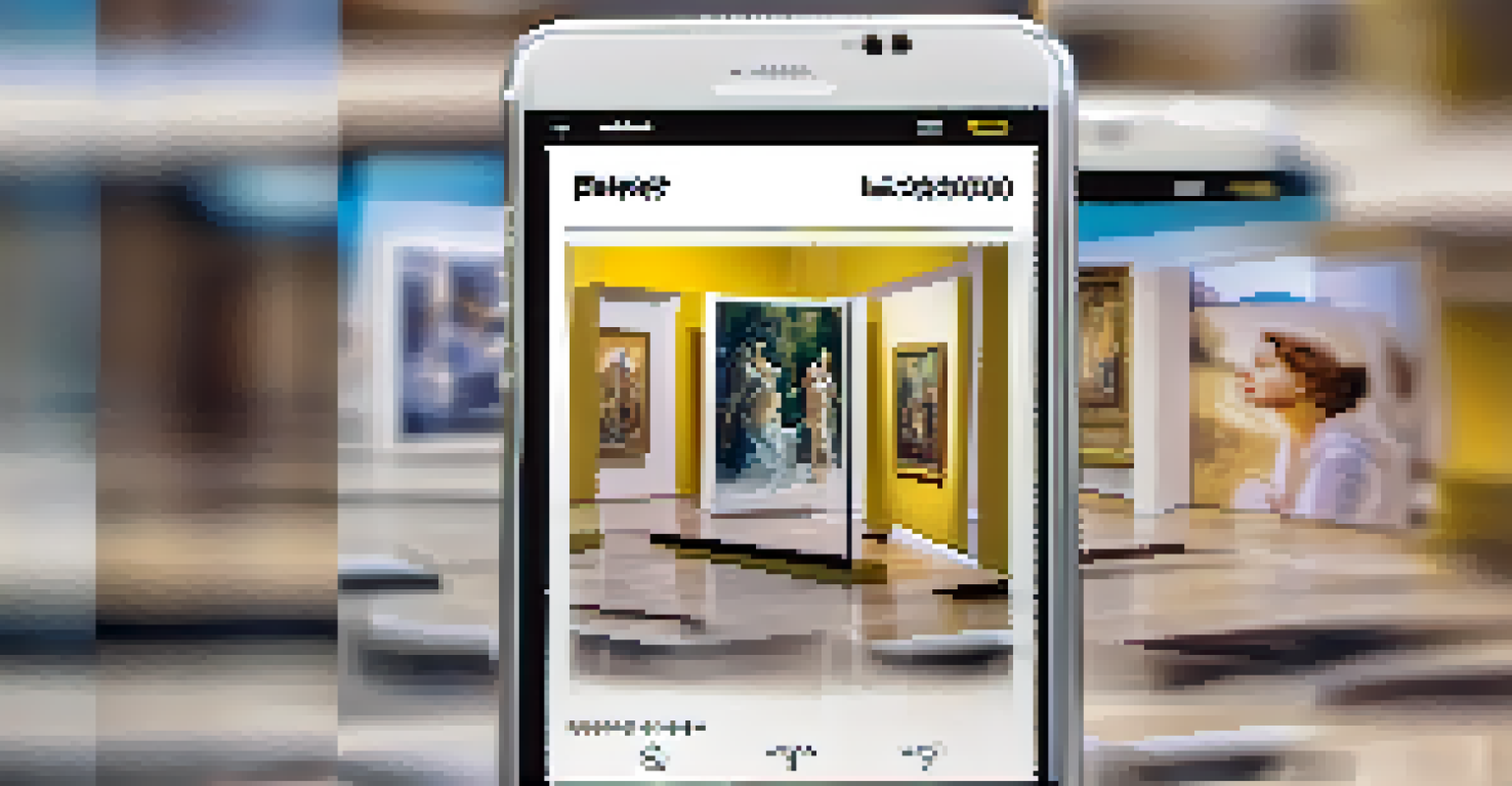Creating Educational Materials for Your Art Exhibition

Understanding Your Audience for Effective Materials
Before you begin crafting educational materials, it's essential to understand your audience. Consider who will be attending your exhibition: art enthusiasts, students, or perhaps families. Each group may have different interests and levels of art knowledge, which will influence the type of information you provide.
The best way to predict the future is to create it.
For example, younger audiences may appreciate interactive elements, such as quizzes or hands-on activities, while art professionals might prefer in-depth analyses of the artworks. By tailoring your materials to these audiences, you can enhance their overall experience and engagement with your exhibition.
Ultimately, knowing your audience allows you to create materials that resonate with them, fostering a deeper connection to the art and ensuring your message is effectively communicated.
Choosing the Right Format for Educational Content
When it comes to educational materials, the format plays a crucial role in how your message is received. Options include brochures, audio guides, videos, and even digital apps. Each format has its unique advantages and can cater to different learning styles.

For instance, visual learners might benefit from infographics that summarize key points about the artworks, while auditory learners could appreciate a guided audio tour that narrates the exhibition's themes. Mixing formats can also create a richer experience, ensuring that all visitors find something engaging.
Know Your Audience Well
Understanding your audience's interests and knowledge levels allows you to tailor educational materials that enhance their engagement with the exhibition.
Ultimately, the right format should complement the content, providing clarity and enhancing the visitor's understanding of the exhibition.
Crafting Clear and Engaging Content
Once you've settled on a format, it's time to focus on the content itself. Clear and engaging writing is key to making complex ideas accessible. Use simple language, avoid jargon, and break down intricate concepts into digestible pieces.
Tell me and I forget, teach me and I remember, involve me and I learn.
For example, instead of using art-specific terms like 'chiaroscuro,' you could explain it as the use of light and shadow to create depth. This makes your materials more approachable for all visitors, regardless of their art background.
Furthermore, incorporating anecdotes or stories about the artists or artworks can foster emotional connections and make the content more relatable.
Incorporating Visual Elements to Enhance Learning
Visual elements are essential when creating educational materials for an art exhibition. They not only draw attention but also aid in understanding complex information. High-quality images of the artworks, diagrams, or even sketches can illustrate key points and provide context.
For instance, including a side-by-side comparison of different artistic styles can help visitors visualize the evolution of a particular technique. Additionally, using color schemes and typography that reflect the theme of the exhibition can create a cohesive look and feel.
Choose Engaging Formats
Selecting the right format for your educational content, such as brochures or digital apps, ensures that diverse learning styles are accommodated and that messages are effectively communicated.
By thoughtfully integrating visual elements, you can significantly enrich the educational experience and keep visitors engaged.
Utilizing Technology to Enhance Engagement
In today’s digital age, technology can be a powerful tool to enhance educational materials. Consider creating a mobile app or a website that offers deeper insights into the exhibition. Features like augmented reality can bring artworks to life and provide interactive experiences.
For example, visitors could scan a QR code next to a piece to access additional content, such as artist interviews or behind-the-scenes videos. This not only enriches their understanding but also encourages them to explore the exhibition further.
Leveraging technology can transform a traditional exhibition into an interactive learning experience that resonates with a tech-savvy audience.
Testing Your Materials Before the Exhibition
Before launching your educational materials, it's crucial to test them with a small audience. Gather feedback from friends, family, or colleagues who can provide insights into the clarity, engagement level, and overall effectiveness of the content. This step helps identify any areas for improvement.
For instance, if visitors struggle to understand certain concepts, you may need to simplify your language or provide more visual aids. Testing allows you to fine-tune your materials, ensuring they meet the needs of your audience.
Leverage Technology for Interaction
Utilizing technology, like mobile apps and augmented reality, can transform traditional exhibitions into interactive experiences that captivate tech-savvy visitors.
By making adjustments based on feedback, you can enhance the visitor experience and create educational materials that truly resonate.
Promoting Your Educational Materials Effectively
Once your educational materials are ready, it’s time to promote them. Utilize social media, newsletters, and your exhibition's website to spread the word. Highlight the unique aspects of your materials, such as interactive components or exclusive content, to pique interest.
Consider offering sneak peeks or behind-the-scenes looks at your materials to create anticipation. Engaging potential visitors through storytelling about what they can expect from the exhibition can build excitement.

Effective promotion ensures that your audience is aware of the educational resources available, encouraging them to engage with the exhibition on a deeper level.